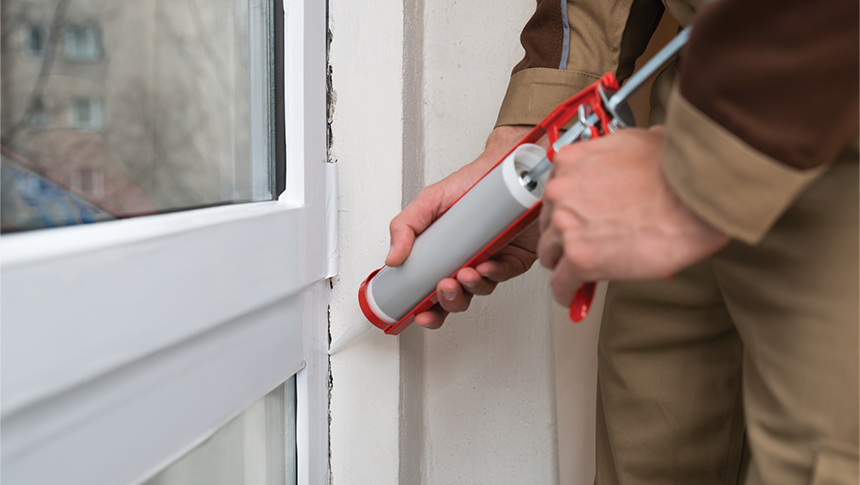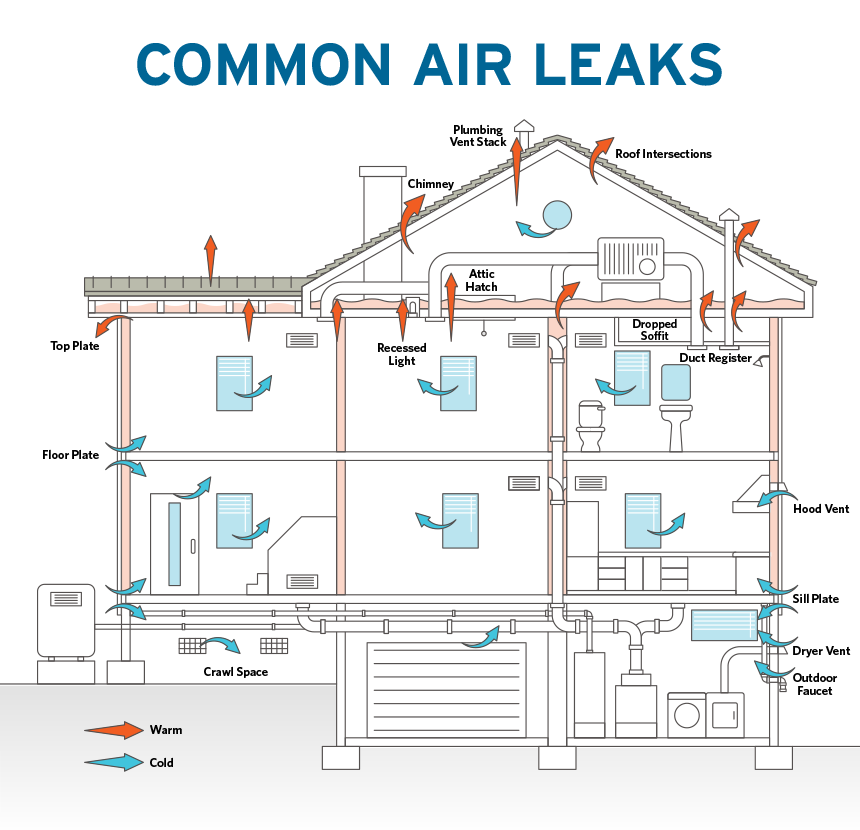Tips for identifying air leaks in your home
Seasonal Updated: May 10, 2024Improve air quality and increase home comfort with these DIY tips.

Improve air quality and increase home comfort with these DIY tips.

Air leakage is the unintended transfer of air between the interior part of your home and the exterior area of your home. All homes have some level of air leakage. Older homes often have a higher level of air leakage.
While ventilation is an important element of a healthy home, it is best to ensure the right amount of outside air is coming into your home in a deliberate way, rather than from unwanted air leaks. Deliberate and controlled methods of ventilation can ensure fresh air is brought into the home. Random and unintentional air leaks around the home can lead to outside air bringing unwanted contaminants into the home and increased heating and cooling costs in the winter and summer months. For example, some central heating and cooling systems can bring in fresh air when the fan is operating. The air travels through a metal duct through an exterior wall then through the air filter before circulating in the home. This is a great way to ensure the right amount of fresh air is coming into your home and is not bringing in any unwanted contaminants.
Alternatively, air leaking into your home through the attic, garage or through a crawlspace under the home is not controlled and can bring unwanted moisture and contaminants.
Common areas for air leakage that can be visually inspected include:

You can conduct a visual inspection of your home to locate and target critical areas of unwanted air leakage. Air leaks are easier to locate if the interior is dark so you can look for daylight coming through any gaps or cracks. You can also hold up your hand to an interior surface and monitor for the feeling of air movement. This works better on cold or windy days when the air movement is more noticeable. While not as precise as using a home energy professional, this method can still help with the energy consumption and air quality in your home. Once the air leaks are identified, you can decide if you want to try to tackle some of the easy-to-access leaks through DIY air sealing methods or simply hire a trained professional to address all the air sealing needs in your home. Home improvement stores contain a wide variety of DIY-friendly air sealing products, including window & door weatherstripping kits, expanding foam spray cans, and caulk. Be sure to check all safety guidance provided by the manufacturer before installing spray foam materials.
Home energy professionals are trained to measure and locate air leakage by using a Blower Door Test. This method will help determine a clear path to addressing air leakage and ensure the proper level of fresh air is entering your home.
If you would like to have a professional help you locate and assess air leakage in your home, find a trade ally contractor to schedule a blower door test.